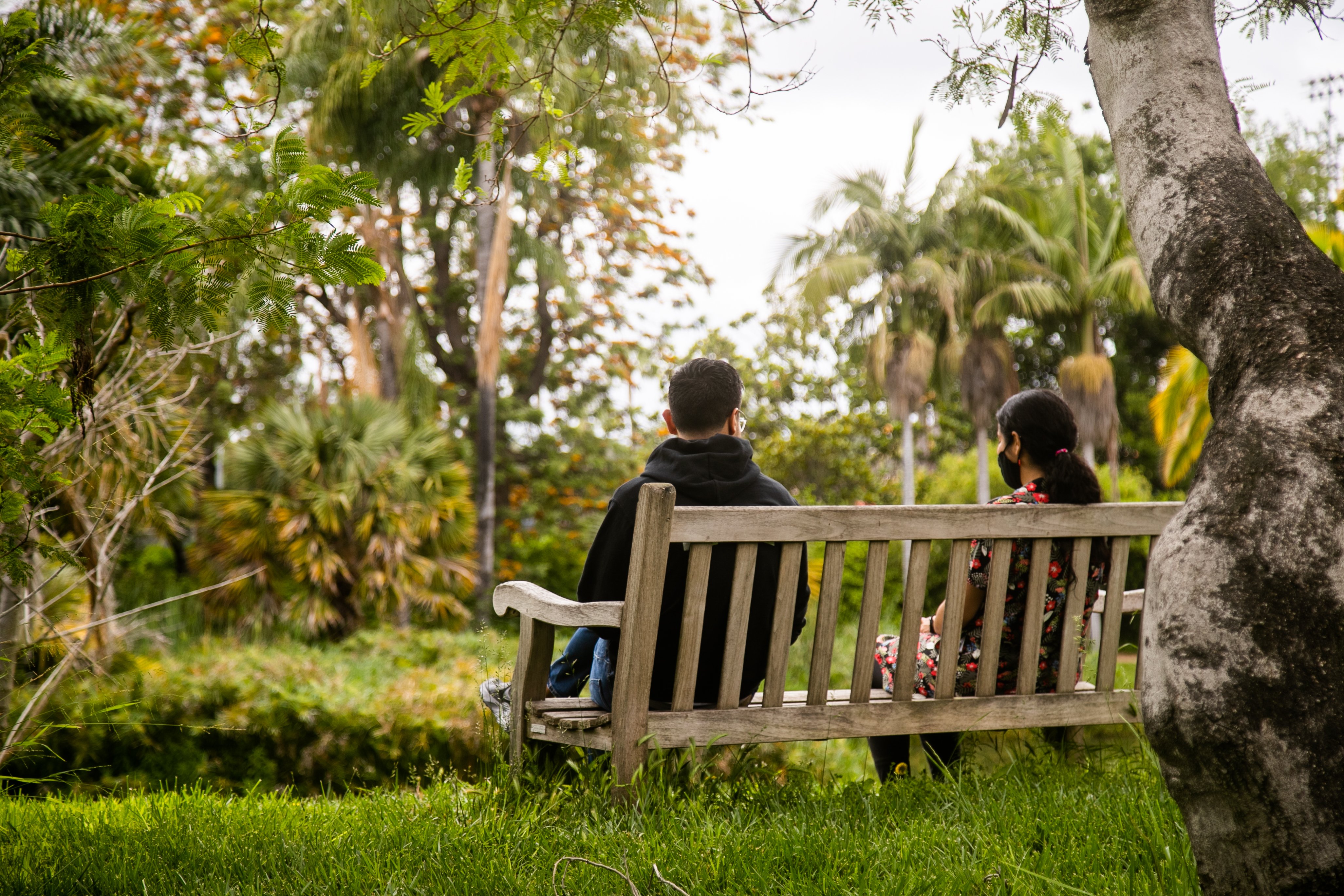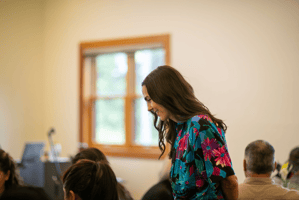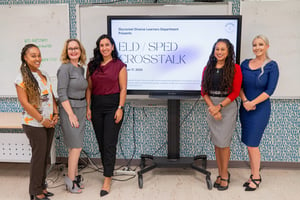When Jacki Welsh began her teaching career in 2011, she couldn’t have predicted that multilingual...
How Arts Education Transforms Student Success: Expert Insights from Skyrocket's Program Manager
Arts programming significantly improves student engagement, career readiness, and social-emotional development, with measurable impacts on graduation rates and academic success. Even schools with limited budgets and space constraints can implement meaningful arts experiences that transform student outcomes.
When it comes to inspiring students through creative learning, Emily Vielma, Art Program Manager at Skyrocket™ Education Services, has witnessed firsthand how arts programming can revolutionize student engagement and academic success. With extensive teaching experience and expertise in program design, Emily leads Skyrocket™'s Arts and Creative Engagement (ACE) programs with one clear mission: ensuring every student regardless of school resources has access to transformative arts experiences.
Why Arts Education Matters More Than Ever in 2025
The Economic Reality of Creative Careers
According to Emily Vielma, the creative economy presents unprecedented opportunities for today's students. Based in Los Angeles, she observes daily how creative industries drive economic growth and provide diverse career pathways.

Emily teaches and introduces the program at VIP Records Rapping & Recording Experience featuring an immersive hands-on experience to explore writing, rapping, recording, beatmaking & DJing.
"One in six jobs in LA is creative. I want students to get a taste of that and see themselves in potential career paths. But beyond careers, the arts are essential to living a well-rounded life especially after COVID, when students lost critical social spaces. Arts programming helps them reconnect, re-engage, and find their voices again."
The pandemic fundamentally changed how students interact socially and emotionally. Emily emphasizes that arts programming addresses critical gaps left by traditional academic approaches, as reflected in the quote above.
How Do Schools Implement Arts Programs with Limited Resources?
Flexible Program Design Solutions
Emily began her journey with Skyrocket™ by conducting thorough needs assessments at partner schools. This research-based approach revealed common challenges that informed her program development strategy.
"I got to know the schools really well and understood the logistics and limitations for example, not always having enough space for a program or enough budget to bring in somebody. My vision was to create something flexible that schools could actually access, whether that was a full program, one class, or even a single-day experience."
Skyrocket™'s adaptable model removes traditional barriers to arts education access. The organization provides professional teaching artists, complete supply packages, curriculum designed for various configurations, and programs scalable from single workshops to multi-week series.
"We hire professional artists, bring all the supplies, and run the class on site. That way, even schools without in-house teachers or local arts access can still offer students a high-quality experience."
What Career Skills Do Students Actually Learn Through Arts Programming?
Beyond Traditional Art Classes: Industry-Focused Experiences
Emily designs programs that connect creative expression directly to professional skill development. These experiences go far beyond conventional arts education.
VIP Records Rap & Recording Experience: Students collaborate with hip-hop artists, DJs, and audio engineers including professionals who have worked with industry legends like Tupac. Participants learn:
- Lyric writing and composition techniques
- Professional recording and mixing processes
- DJ skills and music production
- Music industry networking strategies
- Digital marketing for artists
- How to handle constructive criticism professionally
According to Emily, "We want them to walk away not only with creative skills but also with career-readiness skills like how to network, use social media, deal with criticism, and actually make a living through the arts."
Fashion Design Programs: These experiences emphasize both individual creativity and collaborative problem-solving while introducing students to fashion industry career pathways.

Students sharing their fashion project at Skyrocket™'s Fashion Design Experience.
Art & Mindfulness Retreats: Students develop stress management techniques, reflective practices, and learn to use creativity as a tool for emotional regulation.

Students and staff practicing mindfulness at Skyrocket™'s Arts and Creative Experience (ACE)'s Art Retreat.
What Transformations Do Students Experience?
Measurable Social-Emotional Development
Emily documents significant behavioral and academic improvements among program participants. These changes often extend far beyond the arts classroom.
Case Study 1
Overcoming Social Anxiety: One student arrived at a mindfulness retreat experiencing severe anxiety, unable to make eye contact or participate in group discussions. Through consistent arts programming over one year, this student developed confidence, began actively engaging with peers, and eventually took on leadership roles.
"It felt like a full circle moment. The arts gave her a pathway to step out, practice courage, and come back ready to own her voice."

Students exploring the art of DJing at the VIP Records Rapping and Recording Experience.
Case Study 2:
Leadership Development Through Music: During a multi-day music immersion program, a student who typically avoided participation gradually opened up through collaborative songwriting. By the program's conclusion, he performed an original guitar piece for peers and, significantly, stepped up to support a struggling chaperone.
Long-Term Academic and Personal Impact
These transformations demonstrate measurable growth in:
- Emotional intelligence and self-regulation
- Public speaking and presentation skills
- Leadership capacity and peer mentorship
- Creative problem-solving abilities
- Academic engagement across subjects
Emily emphasizes the lasting impact of these transformations:
"A lot of students will come to multiple experiences. So they'll have a great time at one, they'll sign up for the next one. We'll start to get these repeat students who are like, I love these.
The experiences are probably one of the things that just seem to really be a crowd-pleaser with the students because it is so immersive. We do get a lot of positive feedback from our point people at the schools just with the buzz of students wanting to go and even the chaperons talking about how they want to chaperon these events."
For longer programs, Emily notes even more dramatic results:
"Our American music journey trip after 20 days of travel with the same group of students you're seeing serious changes and transformations happening. The last day of that trip series it's like we're all in tears, we're all crying talking about how transformational it's been."
Why Should School Principals Invest in Arts Programming?
The Business Case for Arts Education
School administrators face constant pressure to demonstrate return on investment for every program. Emily addresses these concerns directly with data-driven arguments.
"It's easy to cut the arts because they don't always show up in immediate metrics. But they directly impact graduation rates, retention, and overall academic success. More importantly, they help us raise the kind of critical thinkers and creative problem-solvers who will thrive and lead in our world."
Measurable Outcomes for School Leaders
Schools implementing comprehensive arts programming report:
- Improved student attendance rates
- Increased engagement across all academic subjects
- Enhanced school culture and peer relationships
- Better student emotional regulation and conflict resolution
- Stronger parent and community engagement
What's Next for Arts Education Innovation?
Expanding Arts for Social Impact
Emily envisions programs that combine creative skill development with civic engagement and social justice education.

Students learn about music and dive into the magic of songwriting at the VIP Records Rapping and Recording Experience.
"I want students to feel empowered to use their creativity not just for expression, but to speak into issues they care about and make a difference."
Future program concepts include filmmaking experiences where students create documentaries about local community issues, combining technical skills with investigative journalism and advocacy.
How Can Schools Get Started?
Taking the First Step
For school leaders interested in implementing arts programming, Emily recommends starting with a needs assessment and pilot program approach.
Initial Implementation Steps:
- Assess current student engagement and identify specific challenges
- Start with a single-day workshop to gauge student and teacher response
- Gradually expand based on observed outcomes and available resources
- Document student progress and share results with stakeholders, board members, etc.
Contact Information: Schools interested in exploring arts programming options can reach out to Marlin Navarro at marlinnavarro@skyrocket-ed.com for program consultations and customized proposals.
Investing in Student Potential
Skyrocket™'s Arts and Creative Engagement (ACE) programs provide life-changing opportunities for students to discover passions, develop professional skills, and envision new futures.
For principals and school leaders, these programs aren't simply an investment in creativity. They're a strategic investment in student success, academic engagement, and long-term potential that extends far beyond graduation.
The evidence is clear: when schools prioritize arts education, students develop the creative thinking, emotional intelligence, and professional skills necessary to succeed in an increasingly complex and interconnected world.
FAQs
Learn more about our Arts & Creative Expression programs
What if our school doesn't have space for arts programming?
Skyrocket™'s programs are designed to work in any available space. As Emily Vielma explains, "My vision was to create something flexible that schools could actually access, whether that was a full program, one class, or even a single-day experience." Programs can be adapted for classrooms, gymnasiums, cafeterias, or outdoor spaces.
Can schools with limited budgets still offer quality arts programming?
Yes. Skyrocket™ provides a complete solution that eliminates common budget barriers. "We hire professional artists, bring all the supplies, and run the class on site. That way, even schools without in-house teachers or local arts access can still offer students a high-quality experience."
How flexible are the program options?
Programs range from single-day workshops to multi-week series. Schools can choose the format that best fits their schedule, budget, and student needs. Each program is customized based on the school's specific requirements and limitations.
How do arts programs actually help with academic performance?
While arts programs may not immediately show up in standardized test scores, research demonstrates their significant impact on graduation rates, student retention, and overall academic engagement. “More importantly, they help us raise the kind of critical thinkers and creative problem-solvers who will thrive—and lead—in our world."
What makes these programs different from regular art classes?
Skyrocket™’s Arts and Creative Expression (ACE) programs combine professional-level instruction, industry exposure, career readiness training, and social-emotional learning in ways that traditional art classes typically cannot provide. Students gain both creative skills and practical life skills that extend far beyond the arts classroom.
.png?width=130&height=130&name=01%20Skyrocket%20Trademark%20Logo_Seal%20Opt2%20(Full%20Color).png)

